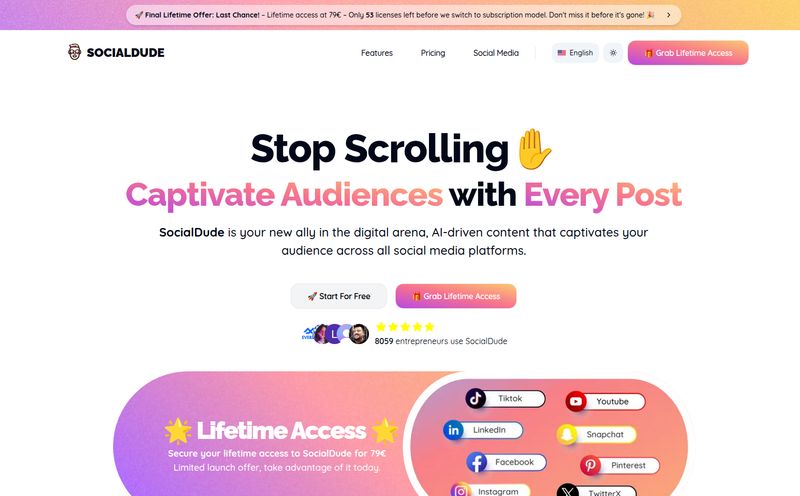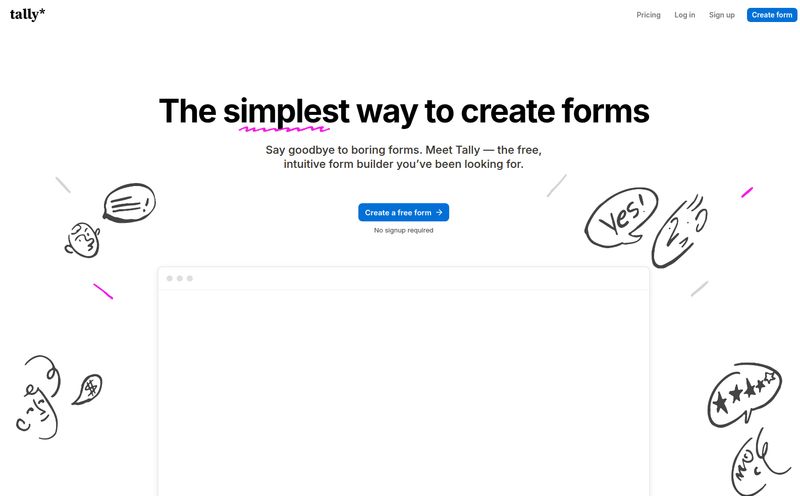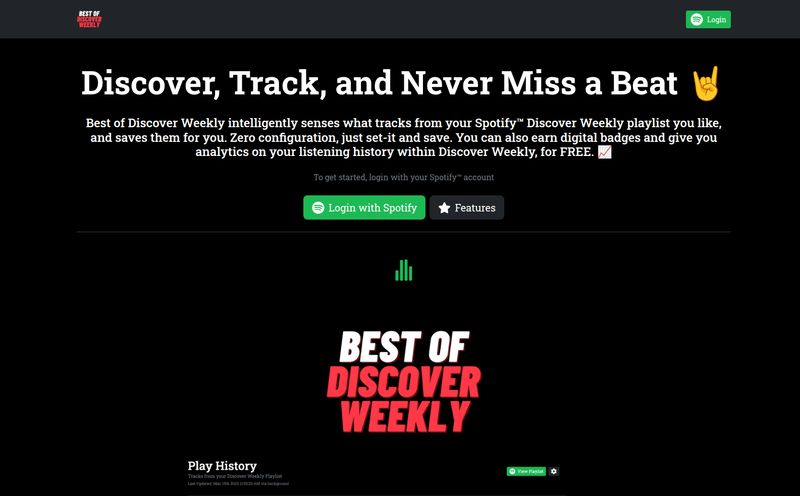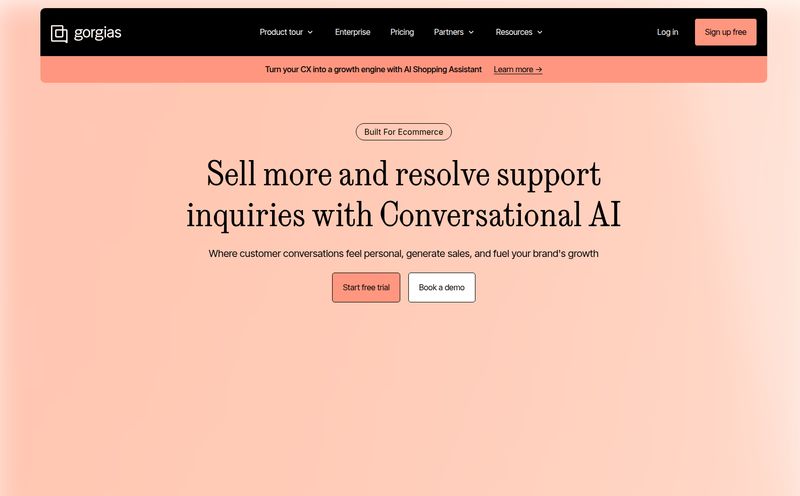For years, I've lived and breathed digital analytics. I swim in a sea of data from Google Analytics, Search Console, Ahrefs... you name it. We track every click, every scroll, every abandoned cart. It’s given online businesses an almost unfair advantage. Meanwhile, our brick-and-mortar cousins have been stuck with, what? Door counters? Maybe a loyalty card program if they're fancy?
It’s always felt like a massive data gap. The physical world, where most commerce still happens, has been a black box. You know people came in, and you know what they bought. But the entire journey in between? The hesitation in aisle 4, the product they picked up and put back down, the promotional display they completely ignored? A total mystery.
So when I first heard about Standard AI, my ears perked up. The claim is simple but audacious: turn your existing, 'dumb' security cameras into a full-fledged, in-store analytics powerhouse. No new hardware, no crazy installation. Just... smart software. It sounded a bit like magic, and in the world of SEO and traffic, I'm always skeptical of magic. But I had to look closer.
So, What Exactly is Standard AI?
Let's break it down. Standard AI is a platform—specifically, their VISION platform—that uses computer vision to analyze the video feeds from your store's security cameras. In essence, it watches the anonymized movements of shoppers and employees to give you actionable data. Think of it less like a security guard and more like a team of hyper-observant business analysts who never sleep or take coffee breaks.
It's designed to bring the clarity of e-commerce analytics to the often-messy reality of a physical retail space. For brands, it's a way to see if their in-store marketing is actually working. For retailers, it’s a roadmap to understanding how customers truly use their space.

Visit Standard AI
The Magic Behind the Curtain: How It All Works
The biggest headline here, and honestly the most impressive part for me, is the promise of no new hardware. Anyone who's dealt with a retail tech rollout knows the headache and cost involved in installing new sensors, beacons, or specialized cameras. It’s a nightmare of capital expenditure and operational disruption.
Standard AI sidesteps all of that by plugging directly into the CCTV systems you already have. This lowers the barrier to entry significantly. The system uses sophisticated computer vision algorithms to identify and track human figures through the store. It's not looking at faces—we'll get to that—but at the overall shape and movement. It can tell the difference between a shopper and an employee restocking a shelf, track a person's path from the entrance to the checkout, and see where they stop along the way. It's the physical world equivalent of a session recording or a user heatmap.
Key Features That Actually Matter to Retailers
A tool is only as good as what it helps you accomplish. Standard AI has a few core features that seem genuinely useful, not just tech for tech's sake.
Understanding the Complete Shopper Journey
This is the big one. Standard AI lets you visualize the paths shoppers take through your store. Are they making a beeline for the milk at the back? Are they getting lost trying to find the gluten-free section? Do they discover that new high-margin snack display you put up, or do they walk right past it? Answering these questions can directly inform store layout, staffing decisions, and merchandising strategies. It's like having a real-life funnel analysis for every person who walks through the door.
The “Visual Engagement Score”
I find this metric particularly fascinating. In the digital world, we obsess over 'engagement'—likes, shares, time on page. But how do you measure that in a store? Standard AI attempts to do this with their Visual Engagement Score. It quantifies how much attention shoppers give to specific products or displays. It analyzes things like how long someone looks at a shelf, whether they pick up an item, and how they interact with a promotional display. This moves beyond simple footfall and gets into actual shopper interest. For a CPG brand paying for premium shelf space, this data is gold.
Optimizing Product Performance and Placement
This is where the rubber meets the road. All this data is useless if you can't use it to sell more stuff. By analyzing which products get the most engagement, you can make smarter decisions. Does moving the salsa next to the tortilla chips actually increase salsa sales? (Probably, but now you can prove it with data). You can essentially A/B test your store layout, something that's been a cornerstone of digital marketing for over a decade. The idea of A/B testing a physical endcap gives me chills... in a good way.
The Big Question: What About Privacy?
Okay, let's address the elephant in the room. When you say you're 'analyzing video footage of shoppers,' people get nervous. And for good reason. Thankfully, Standard AI seems to have put this at the forefront of their design. They market themselves as a privacy-first platform.
The key here is that their system does not use facial recognition. It doesn't know who you are, it doesn't store your face, and it can't track you from one store to another. Instead, it processes data in real-time, focusing on anonymized human shapes to generate analytics. As a recent McKinsey report on retail personalization points out, consumers are willing to share data when there's a clear value exchange and trust. Anonymized operational data, rather than personal identification, is a much easier pill to swallow.
The Good, The Bad, and The Unclear
Alright, let's get real for a minute. No tool is perfect. After looking through their materials, here's my honest take.
The Good: The 'use your own cameras' angle can't be overstated. It's a game-changer for adoption. The real-time, actionable nature of the data and the strong focus on privacy are massive pluses. It feels like a mature, well-thought-out solution to a real problem.
The Heads-Up: This isn't a magic wand you just wave at your store. The system requires calibration to learn your specific store layout and product placements. You cant just plug it in and expect perfect data on day one. Furthermore, the quality of your insights will depend on your camera coverage. If you have blind spots, well, the AI will have them too. You might need to adjust some camera angles to get the full picture, which is an extra step to consider.
The Unclear: And now, the million-dollar question—or maybe the ten-thousand-dollar question? The pricing is not listed on their website. This is pretty standard for enterprise B2B software, but it's always a bit of a frustration. You have to 'Contact Us' to get a quote, which suggests it’s likely priced on a per-store or per-camera basis with a subscription model. It’s probably not gonna be cheap, but if the ROI is there, it could easily pay for itself.
Who is Standard AI Really For?
Based on the feature set and likely pricing model, this feels best suited for multi-location retailers, large-format grocery stores, and CPG brands. These are the organizations with the scale to truly benefit from optimizing store layouts and validating in-store marketing spend across a fleet of stores. Could an ambitious, single-location boutique use it? Maybe. But the real power comes from applying these learnings at scale.
A Few Lingering Questions (FAQ)
Do I need to buy special cameras for Standard AI?
Nope! That's one of its biggest selling points. It's designed to work with the existing security camera infrastructure you already have in place.
Is Standard AI spying on my customers?
No. The platform is built to be privacy-first. It does not use facial recognition and analyzes anonymized data about human movement and behavior, not personal identities.
How is this different from simple foot traffic counters?
Foot traffic counters just tell you how many people entered. Standard AI tells you what they did after they entered—where they went, what they looked at, and how they moved through the space. It’s the difference between counting visitors to a website and analyzing their clickstream.
What kind of data can I actually get?
You can expect things like shopper path heatmaps, data on popular and dead zones in your store, dwell times at specific shelves or displays, and product interaction rates (e.g., pick-ups).
How much does Standard AI cost?
The company doesn't publish its pricing publicly. You'll need to contact their sales team for a custom quote based on your specific needs, like the number of stores and cameras.
Can this help me with loss prevention?
While it uses security cameras, its primary purpose is business analytics, not active security monitoring or theft alerts. It analyzes trends over time, rather than flagging specific incidents in real-time for a security team.
My Final Thoughts
The gap between digital and physical retail analytics has been a chasm for a long time. Tools like Standard AI represent a serious, credible bridge. The ability to understand in-store behavior with this level of detail—without a massive hardware investment—is genuinely exciting.
I've been in the SEO and traffic generation game for years, and it's fascinating to see the core principles of digital analytics finally making a real, tangible impact on the shop floor. It’s about time. The future of retail isn’t just about having the right products; it’s about creating the right experience. And you can’t create a great experience if you’re flying blind. Standard AI looks like it’s ready to turn the lights on.



